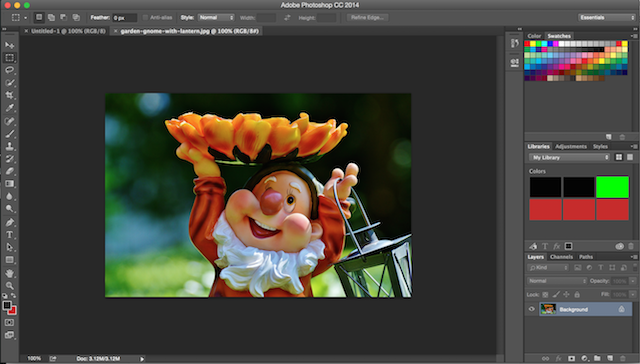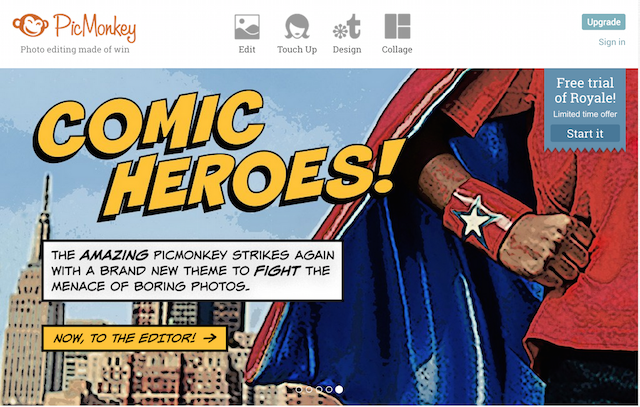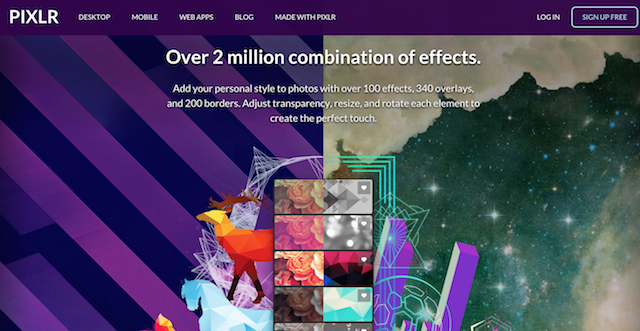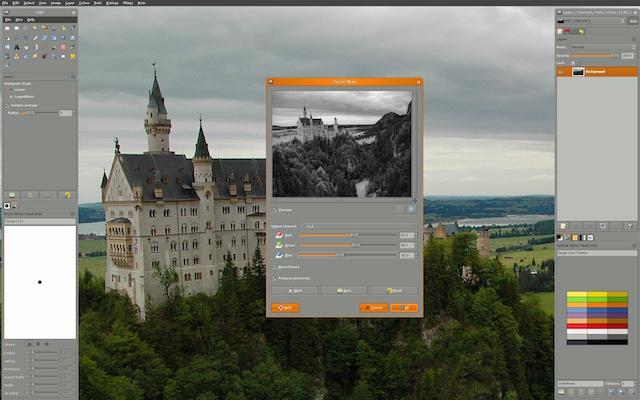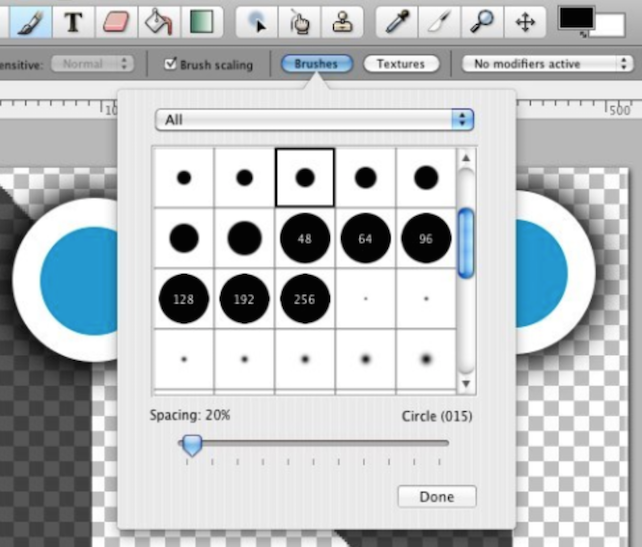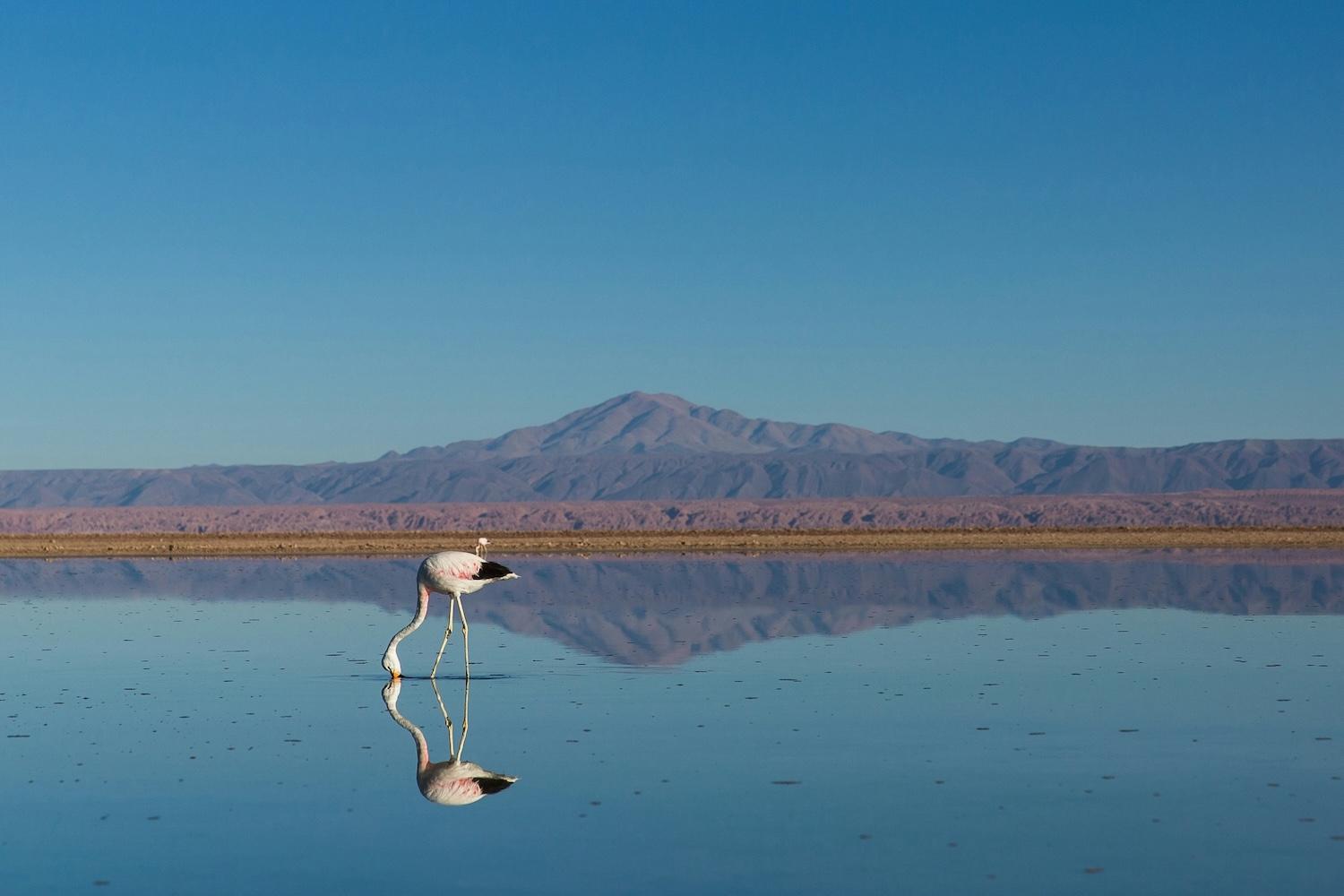If you run your own website or blog, I'm sure you don't need me to hammer home the importance of image editing skills. But I'm gonna do it anyway.
Graphics and images form the non-negotiable backbone of any great site — and while it's fine to hire out your layout, logo and branding, you NEED to be capable of making simple tweaks yourself.
If a blog post or new product needs to be live on your site within three hours and your graphic designer is in the emergency room with her 6-year-old, you're screwed. You don't need to be a pro, but you do need to have some basic editing skills and an understanding of how to work with fresh-from-the-camera images.
I love Photoshop, but …
When most people hear “image editing,” they think, “Photoshop,” and I have to confess that I'm a dyed-in-the-wool Photoshop gal. At a post-college job designing catalog layouts, I worked with a graphic designer who eagerly taught me the basics of the program, and I've never looked back. (If I had any idea where he is today, I'd send him 900 thank-you cards and a large cake.)
I'm fully aware that I only grasp about 5 percent of Photoshop’s capabilities, but that 5 percent is exactly what I need for my blog, newsletter and freelance work. With Adobe's new subscription-only access to CS, which starts at $10 per month, it feels easier to afford even if I'll be paying more for the program in the long run.
I find Photoshop to be elegant, efficient, and easy to use. BUT. I had one-on-one tutoring over the course of several years.
I've heard from many people that Photoshop is counterintuitive and difficult to navigate if you're a newbie. Plus, there are many top-notch Photoshop alternatives that are user-friendly, versatile, and either cheap or free. So despite my bias, I decided to take a look at some of the most popular downloadable photo editing programs out there for a little compare-and-contrast action.
PicMonkey
PicMonkey is the program I've recommended to friends who need access to super-simple photo editing capabilities. No download is necessary; just open an image through the web interface and start tweaking.
The default menu of "Basic Edits" sits to the left of the editing area, with frequently used tasks like crop, rotate, exposure, sharpen and resize. Click on the gray symbols to the left of this menu for further options — including Instagram-like filters, skintone touch-ups and red-eye remover, text overlays, clip art and frames. The color adjustments are broad, but sufficient for most web purposes. Choose from three file sizes and quality levels, save to your computer, and you're done.
If you upgrade to PicMonkey Royale for $4.99 per month or $33 per year, you'll get access to more effects, touch-up tools, fonts, frames, overlays, textures, collage options, and the ability to work in layers. It also offers you an ad-free interface, though the ads on the free version are far from invasive.
PicMonkey Royale includes Photoshop-like tools such as dodge, burn and clone — so if you're a Photoshop lover in search of a replacement, you might be happier with paid PicMonkey than free PicMonkey.
Canva
You have to sign up to use Canva, or log in using Google or Facebook credentials, but this program is also housed entirely online. It's also completely free; paid upgrades are not available.
A quick tutorial appears when you first enter the site, showing how to search Canva's 1 million-plus catalog of free images, add text, and download work to your own computer. You can then walk through the “Beginner's Challenge,” a series of editing tasks that will familiarize you with the interface. This may sound irritating, but it's actually brilliant, especially for novice users: Most people learn by doing, and these tutorials force you to do some guided doing, all the while offering helpful tips and guidance.
Canva isn't meant for photo editing as much as super-simple graphic design. You can certainly work with your own uploaded images, but edits are limited to filters and color tweaks. Most tasks involve using the program's libraries of stock images, backgrounds, fonts and layouts.
You begin by choosing the type of design you're working on — photo collage, social media post, presentation — or by creating a custom-sized canvas. The menus at the left allow you to drag-and-drop elements onto your canvas, everything from fonts and simple font pairings to graphic and photo backgrounds. Many drag-able elements are free, and paid options are typically $1.
Canva is designed to be reactive, so once you've got an item on your canvas, you typically click on it to manipulate it. Objects can be resized, rotated, and adjusted for opacity.
Overall, Canva is a nearly foolproof tool for basic graphic design tasks.
Pixlr
Also web-based, Pixlr offers two levels of service: Express and Editor.
Express focuses on fine-tuning photos, with a suite of tools including color adjustment, cropping, healing and sharpening, along with overlays, frames and type. The interface is incredibly simple, with a blocked toolbar hovering at the bottom of the screen.
As you click through options, deeper menus appear that are both easy to understand and easy to cancel out of. You can undo functions by clicking a tab at top right. The preview of changes can lag a bit, but the adjustments are easy and effective.
Pixlr Express would be a solid choice for anyone in need of rudimentary photo and graphics editing capabilities.
Pixlr Editor is more in-depth, offering the ability to work with layers and a suite of tools that will look and feel familiar to Photoshop users. A top bar menu leads to Image, Layer, Adjustment, View and Filter options, which drop down to allow exposure changes, rotation, sharpening and masking. There's also a floating toolbar at the left with fine-tuning tools like dodge, burn and spot heal, as well as selection tools including wand, pen and lasso.
Photoshop fans will be familiar with the Navigator, History and Layers windows that appear to the right. Text overlays are easy to add and adjust, though font selection is limited. Aside from that, Pixlr Editor is a simplified but functional parallel to Photoshop — and a great choice for anyone in search of a free alternative.
You also can upgrade Pixlr Editor to either a sign-in account or paid access, both of which offer you more refined and advanced versions of various tools. You'll be able to add overlays and borders, apply effects to text, create masks and more.
GIMP
Renowned as the ultimate free Photoshop alternative, GIMP (GNU Image Manipulation Program) is a downloadable program ideal for advanced users seeking a robust photo and graphics editing tool. It is capable of nearly everything that Photoshop can do, though options are housed in slightly different locations. GIMP offers more complex tasks upfront through the toolbar, including perspective, measurement, foreground selection, and an amazing select by color tool.
GIMP’s Help function is terrific, and will point you to program functions quickly and easily. (It helped me open the Undo History window through a rather odd path.) GIMP is fantastic with color photos, allowing for minute adjustments in saturation, hue and exposure. Working with layers takes some getting used to, but if you're willing to put in the time to explore documentation and experiment with the various tools, this program will wow you with its depth and flexibility.
GIMP is better suited to seasoned designers than novice users.
Seashore
Created using Mac OS X's Cocoa framework, Seashore is a free downloadable application that’s also more suitable for advanced users. You won't see any interface until you've got a file open or blank canvas created, as most of the editing functions are situated around the live document.
A top toolbar offers many Photoshop-reminiscent options — including type, paint bucket, gradient, lasso and wand — which can be fine-tuned using a smaller menu that appears below once a tool has been selected. You’ll find more functions in the top menus (Image, Layer, Selection, etc.). You add and delete layers using + and - buttons at bottom left, and all layers show in the wide left column.
Most photo editing tools are in the Selection menu (which I found a bit counterintuitive), including exposure, hue, saturation and sharpening. In order to apply any of these, you must select the area to be edited, even if you'd like to edit the entire photo. The functions are robust and effective, but the inability to track edits through a history pane means working on complex projects can feel clunky.
Seashore was my least favorite of the programs I tested, but it’s still a solid, free, Mac-friendly Photoshop alternative.
I'm a stubborn old coot so I'll be sticking with Photoshop, but I was definitely impressed by the alternatives. There are dozens of others out there, too, and more are being developed all the time. So if forking over $10 a month for all of eternity sounds like a bum deal to you, have faith that you can find a cheap or free photo editor that will suit your exact needs.

